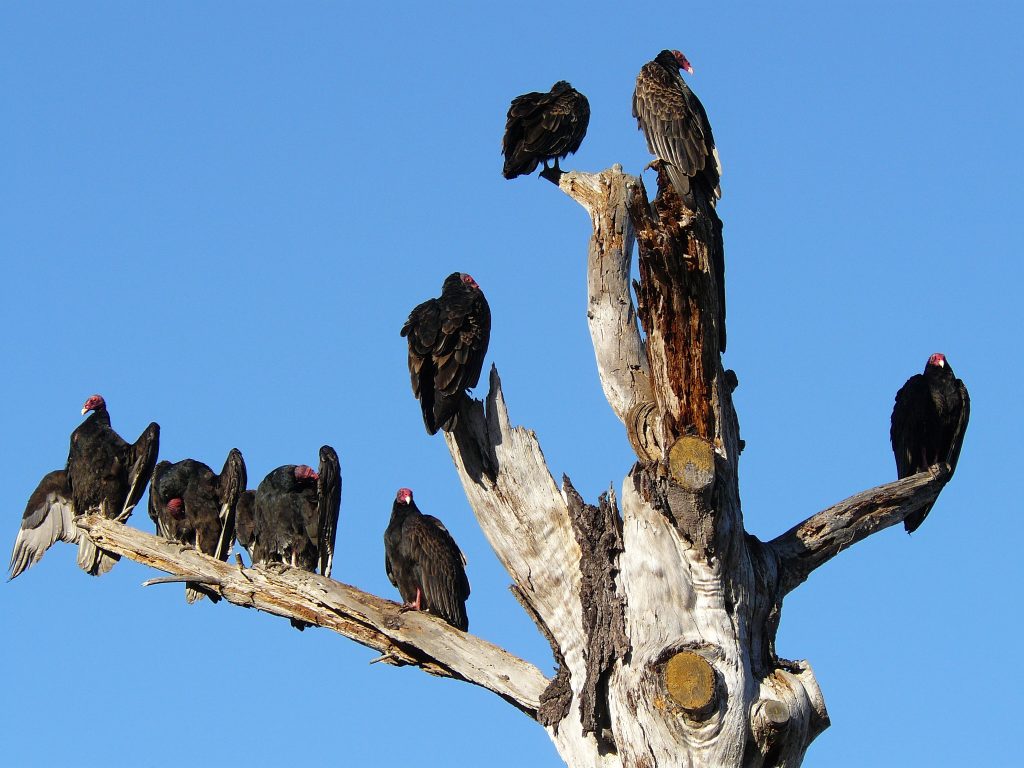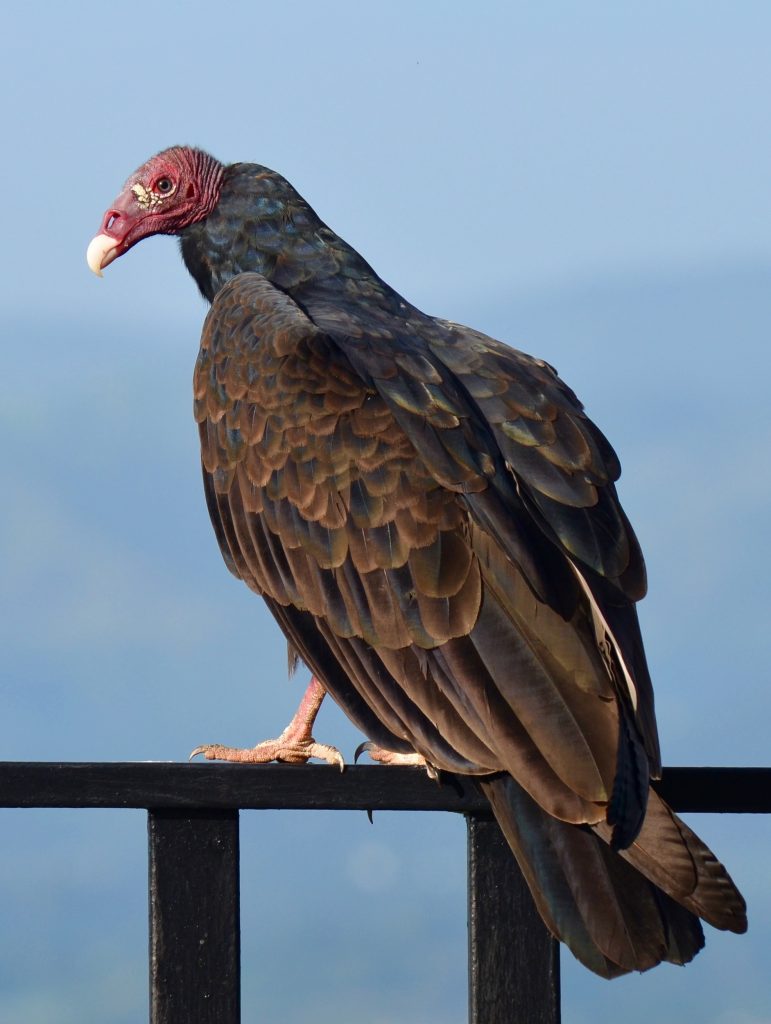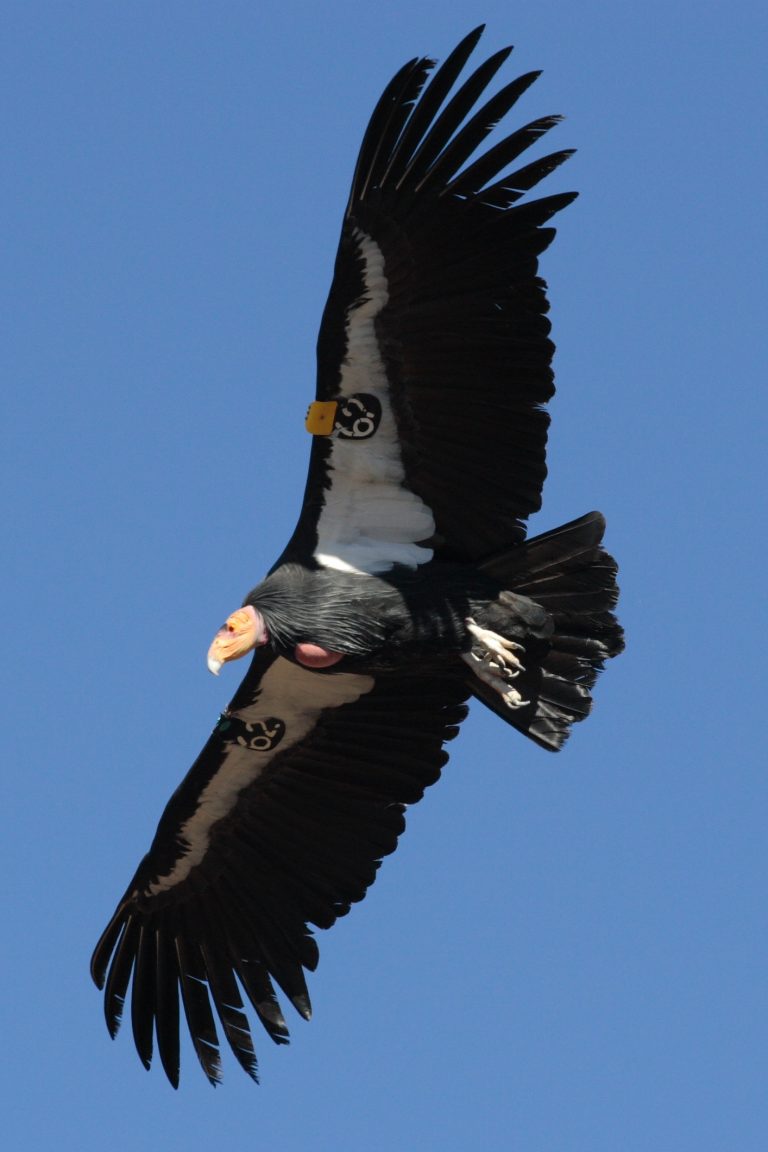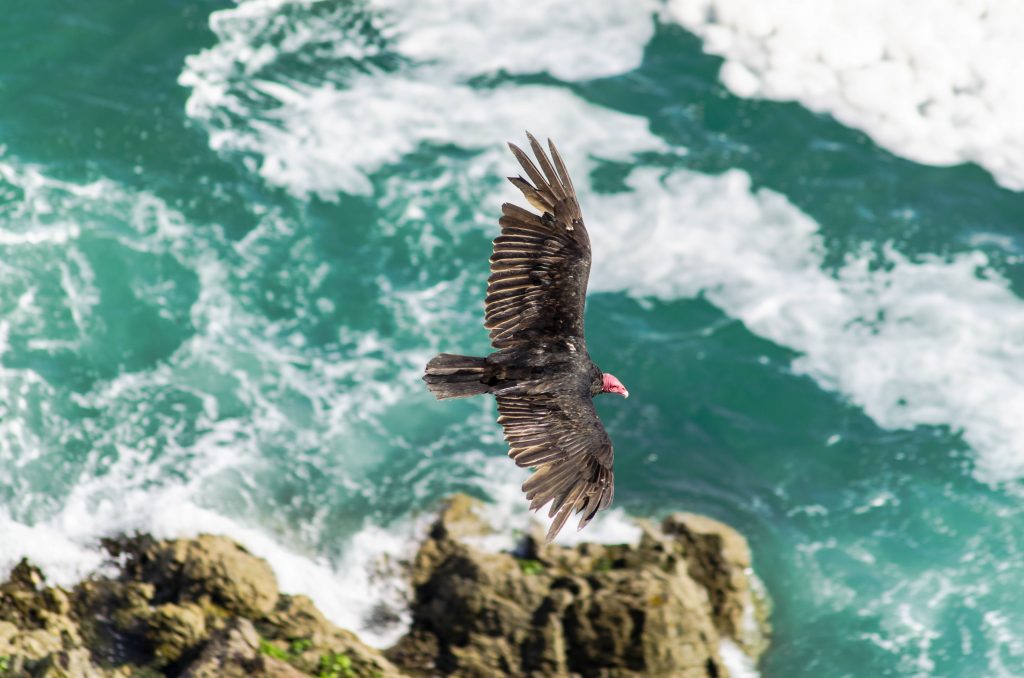Our northern hemisphere spotlight species rarely receives an ’Ahhhh, cute’, but they do play a crucial role in ecosystems, and an outsized role in wildlife management at airports. Turkey vultures (Cathartes aura) are the most widely distributed vulture in the western hemisphere. Their scientific name Cathartes means ‘purifier’, which relates to their important role as a scavenger in ecosystems throughout North America, cleaning up carrion that could harbour disease. They cannot easily tear through thick skin and so they use their featherless head to access carcasses via soft spots such as the mouth and eyes. A head devoid of feathers helps to prevent bacterial infections, which could arise from sticking their heads in day-old carcasses. It may all sound a little disgusting, but without vultures, we would have many more rotting carcasses along our roadways and in agricultural areas.
Their flocking nature, slow-moving flight, and tendency to look for dead things contribute to their strike risk. In flocks, they ride thermals and very rarely actually flap their wings. They migrate long distances simply by moving from one thermal to the next, soaring in circles for long stretches of time in the same area as they await their move to the next thermal. Combine this behaviour with the presence of a carcass near an airport, and the heat-dissipating off a runway and you have quite the attraction. In the United States, strikes with Turkey Vultures from 1990-2020 have resulted in 18 cases of human injury, 1 fatal accident, over 50,000 hours of aircraft downtime and over $30 million indirect costs. Back in 2005, a NASA rocket even struck one on take-off, but luckily the strike did not have an adverse effect on flight.
One of the best ways to prevent Turkey vultures from becoming an airport strike risk is to remove all carcasses on or near the airport. Turkey vultures’ sense of smell is so strong that a gas company has used this ability to find leaks in their system. They simply added a pungent-smelling gas, mercaptan, which smells like rotting eggs, into the gas lines, and then followed the vultures’ ‘noses’. Another useful tool is an effigy. USDA Wildlife Services teams found this effective in deterring vultures, although questions remain as to where the birds move and whether a new roost location could create a greater risk. Once vultures are present, stakeholders may consider modifying vulture roost habitat to decrease attractiveness and using pyrotechnics as part of an active dispersal program.




